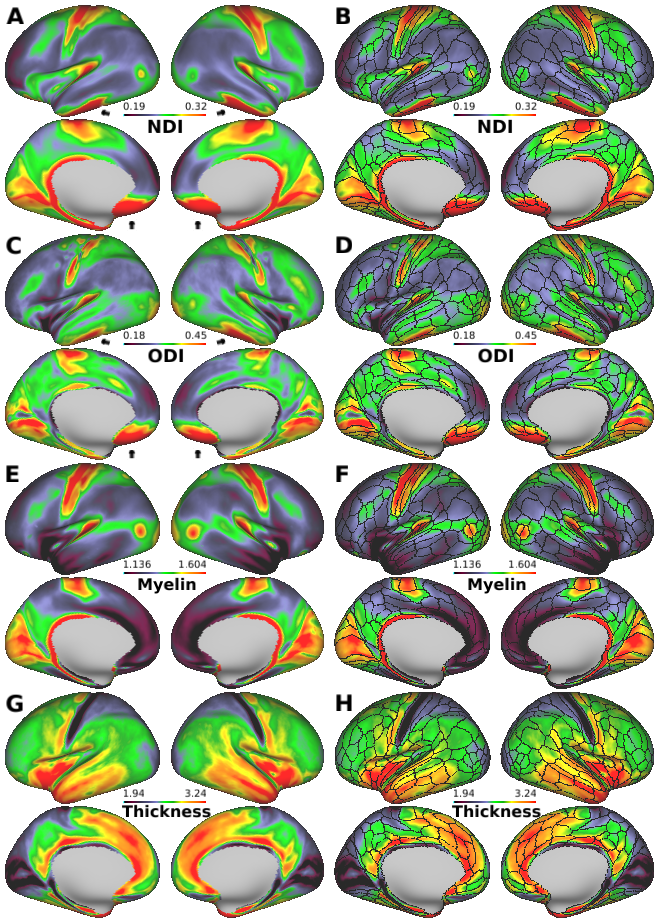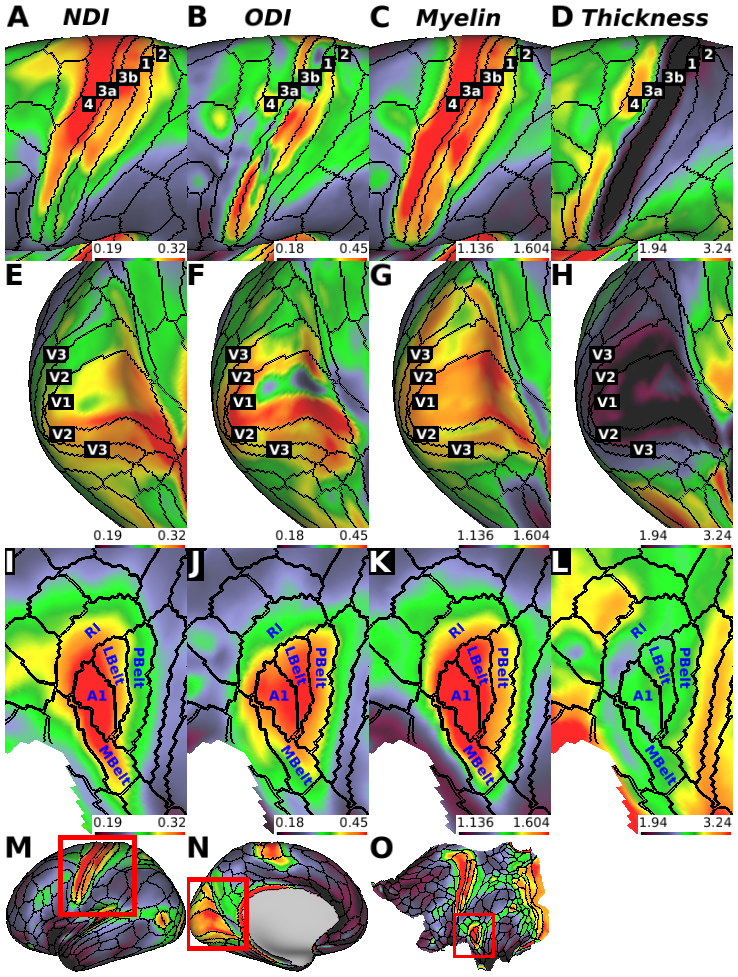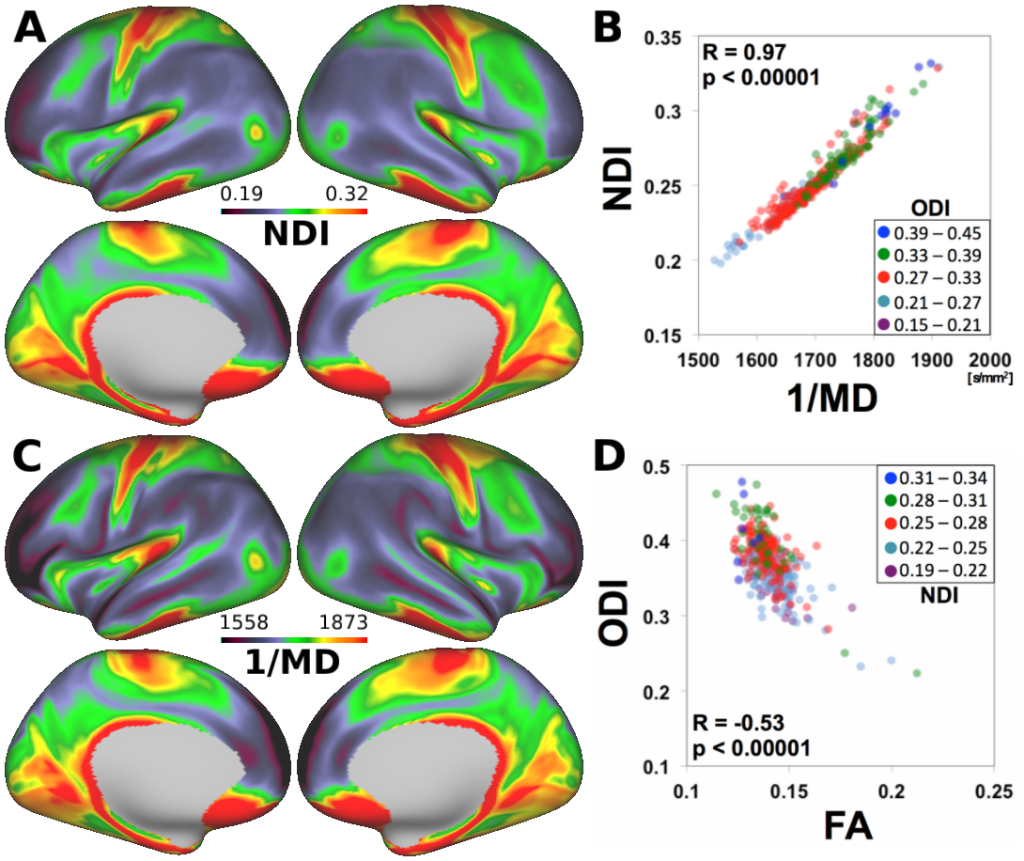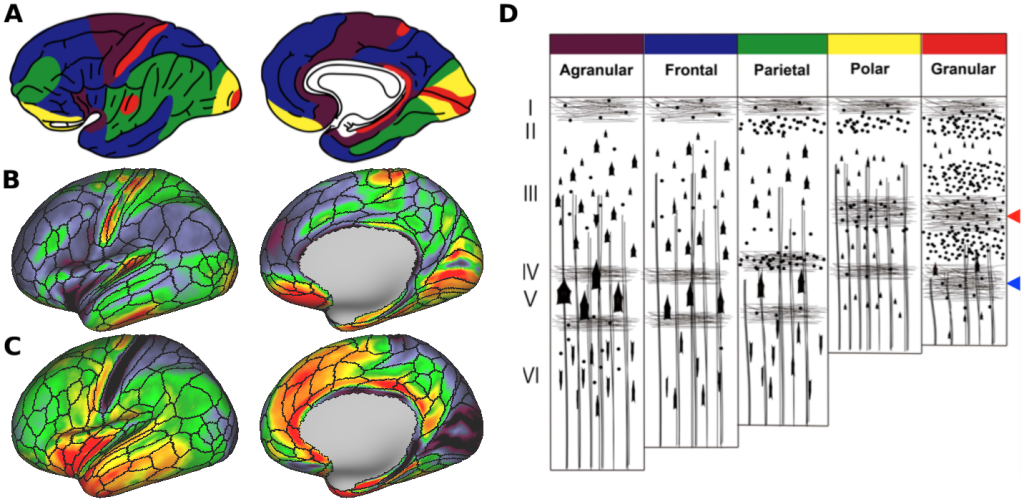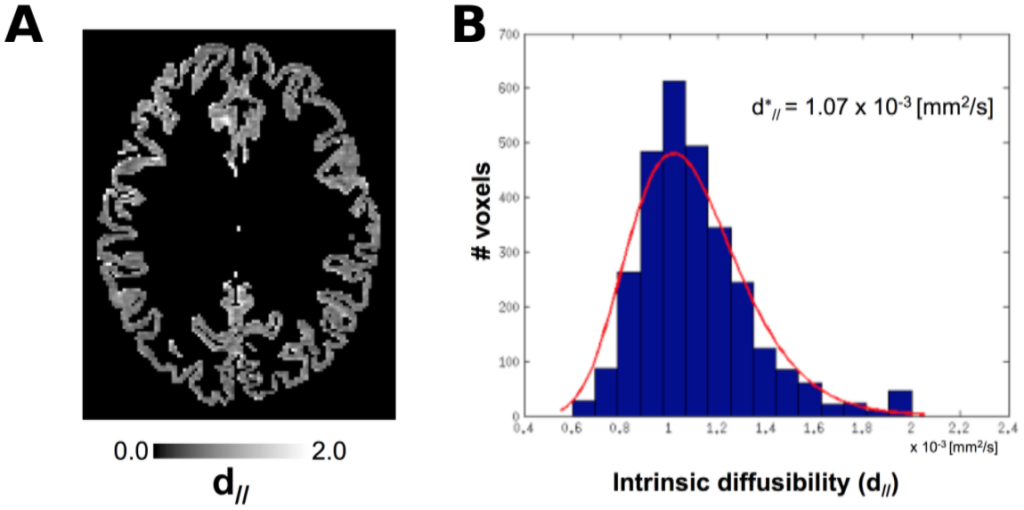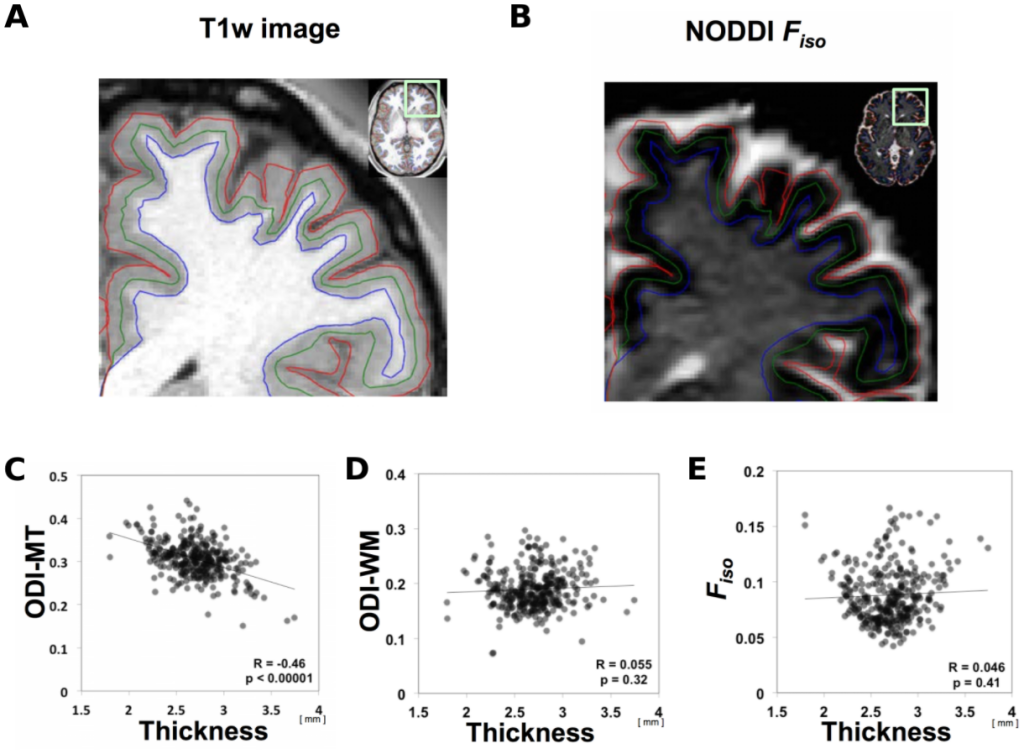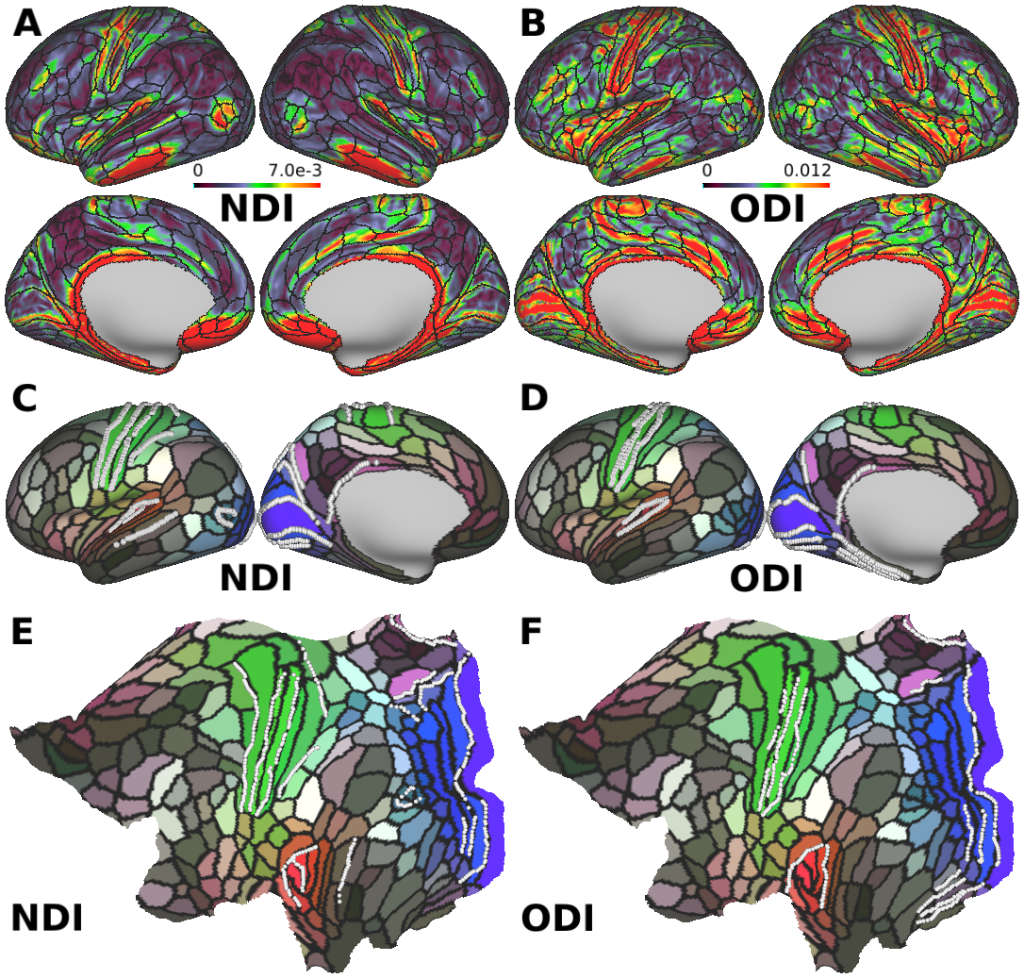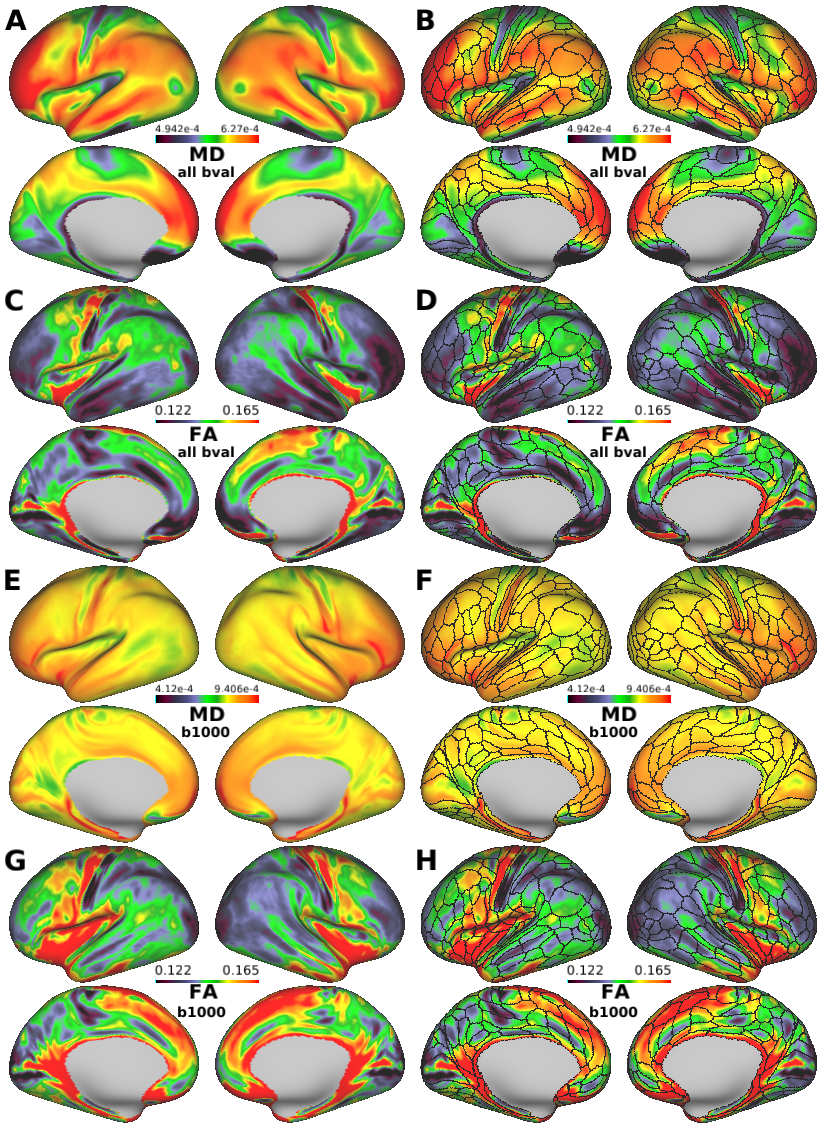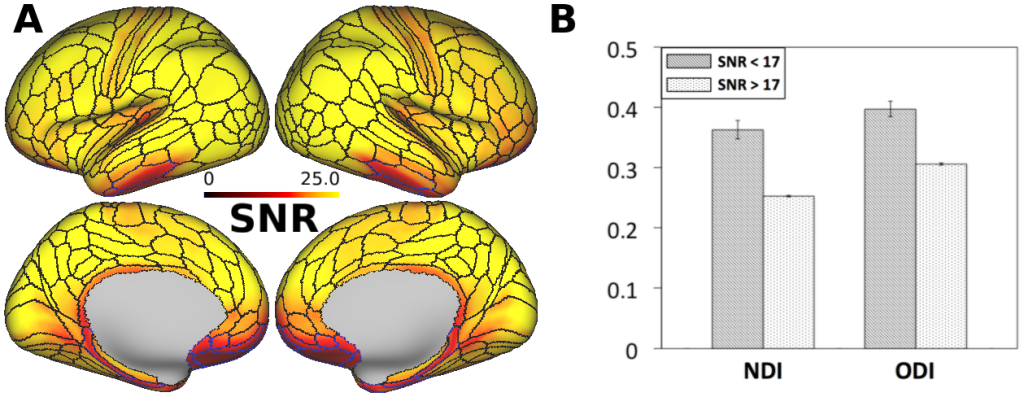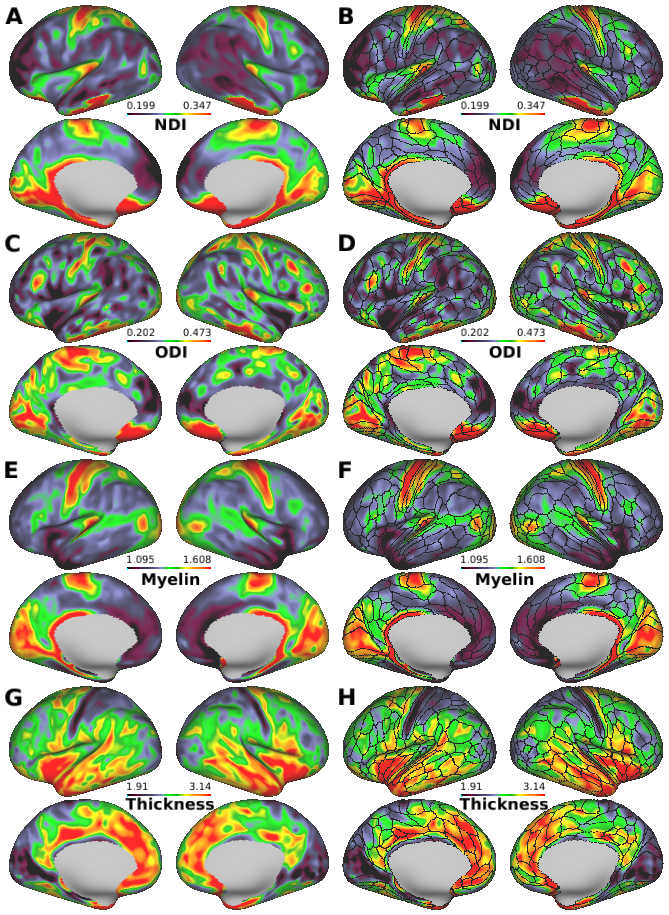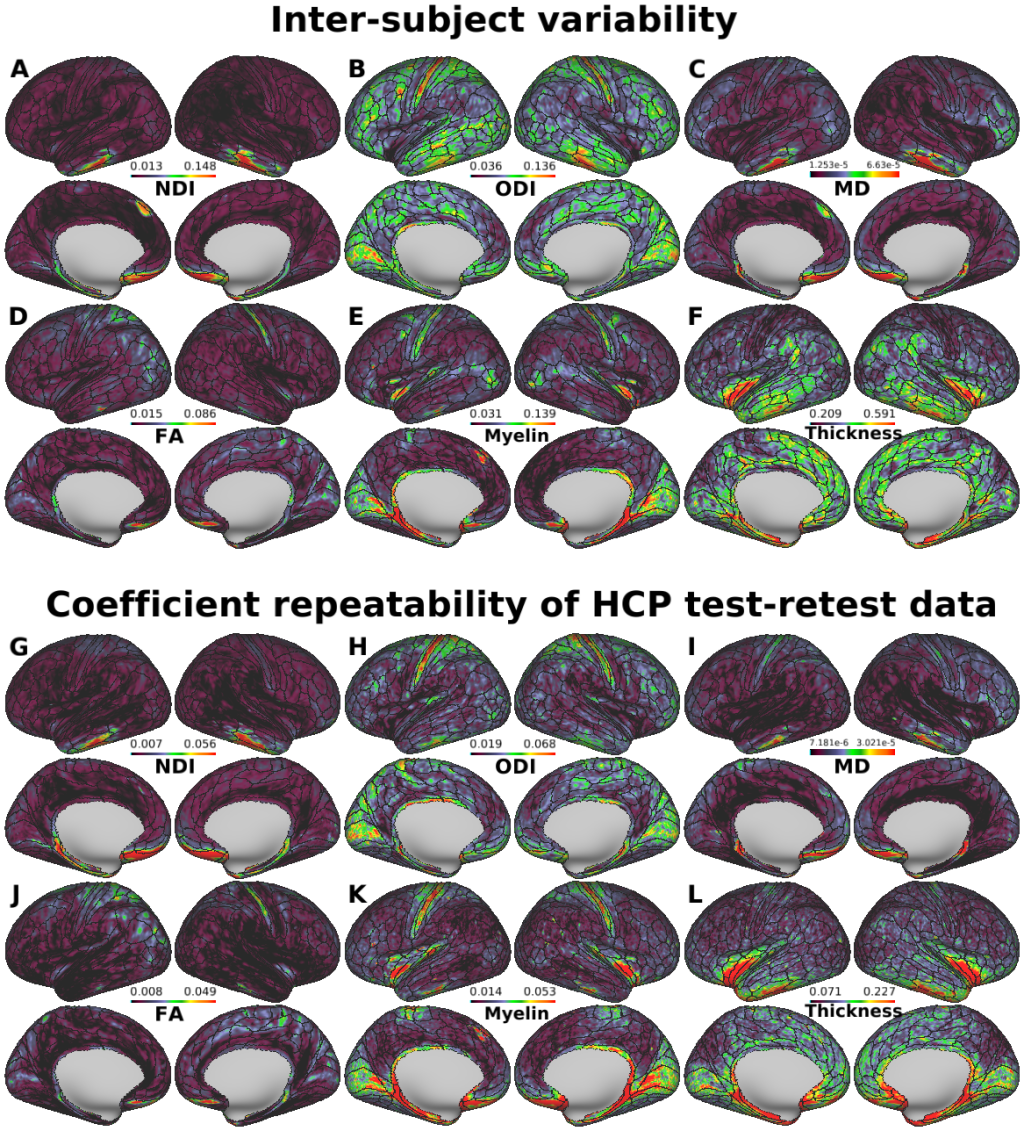FULL TITLE:
Neurite imaging reveals microstructural variations in human cerebral cortical gray matter.
SPECIES:
Human
DESCRIPTION:
We present distinct patterns of neurite distribution in the human cerebral cortex using diffusion magnetic resonance imaging (MRI). ,We analyzed both high-resolution structural (T1w and T2w images) and diffusion MRI data in 505 subjects from the Human Connectome Project. Neurite distributions were evaluated using the neurite orientation dispersion and density imaging (NODDI) model, optimized for gray matter, and mapped onto the cortical surface using a method weighted towards the cortical mid-thickness to reduce partial volume effects. The estimated neurite density was high in both somatosensory and motor areas, early visual and auditory areas, and middle temporal area (MT), showing a strikingly similar distribution to myelin maps estimated from the T1w/T2w ratio. The estimated neurite orientation dispersion was particularly high in early sensory areas, which are known for dense tangential fibers and are classified as granular cortex by classical anatomists. Spatial gradients of these cortical neurite properties revealed transitions that colocalize with some areal boundaries in a recent multi-modal parcellation of the human cerebral cortex, providing mutually supportive evidence. Our findings indicate that analyzing the cortical gray matter neurite morphology using diffusion MRI and NODDI provides valuable information regarding cortical microstructure that is related to but complementary to myeloarchitecture.,
PUBLICATION:
NeuroImage
- DOI:
10.1016/j.neuroimage.2018.02.017
- PMID:
29448073
- Hikaru Fukutomi
- Matthew F. Glasser
- Hui Zhang
- Joonas A. Autio
- Timothy S. Coalson
- Tomohisa Okada
- Kaori Togashi
- David C. Van Essen
- Takuya Hayashi
- University College London
- Kyoto University
- RIKEN
- Washington University in St. Louis

